Balkinization
an unanticipated consequence of
Jack M. Balkin
Balkinization Symposiums: A Continuing List
E-mail:
Jack Balkin:
jackbalkin at yahoo.com
Bruce Ackerman
bruce.ackerman at yale.edu
Ian Ayres
ian.ayres at yale.edu
Corey Brettschneider
corey_brettschneider at brown.edu
Mary Dudziak
mary.l.dudziak at emory.edu
Joey Fishkin
joey.fishkin at gmail.com
Heather Gerken heather.gerken at yale.edu
Abbe Gluck abbe.gluck at yale.edu
Mark Graber
mgraber at law.umaryland.edu
Stephen Griffin
sgriffin at tulane.edu
Jonathan Hafetz
jonathan.hafetz at shu.edu
Jeremy Kessler
jkessler at law.columbia.edu
Andrew Koppelman
akoppelman at law.northwestern.edu
Marty Lederman
msl46 at law.georgetown.edu
Sanford Levinson
slevinson at law.utexas.edu
David Luban
david.luban at gmail.com
Gerard Magliocca
gmaglioc at iupui.edu
Jason Mazzone
mazzonej at illinois.edu
Linda McClain
lmcclain at bu.edu
John Mikhail
mikhail at law.georgetown.edu
Frank Pasquale
pasquale.frank at gmail.com
Nate Persily
npersily at gmail.com
Michael Stokes Paulsen
michaelstokespaulsen at gmail.com
Deborah Pearlstein
dpearlst at yu.edu
Rick Pildes
rick.pildes at nyu.edu
David Pozen
dpozen at law.columbia.edu
Richard Primus
raprimus at umich.edu
K. Sabeel Rahmansabeel.rahman at brooklaw.edu
Alice Ristroph
alice.ristroph at shu.edu
Neil Siegel
siegel at law.duke.edu
David Super
david.super at law.georgetown.edu
Brian Tamanaha
btamanaha at wulaw.wustl.edu
Nelson Tebbe
nelson.tebbe at brooklaw.edu
Mark Tushnet
mtushnet at law.harvard.edu
Adam Winkler
winkler at ucla.edu
Compendium of posts on Hobby Lobby and related cases
The Anti-Torture Memos: Balkinization Posts on Torture, Interrogation, Detention, War Powers, and OLC
The Anti-Torture Memos (arranged by topic)
Recent Posts
The Celebrated, if Not Notorious RBG
Just A Few Blogs
ACS Blog
Alas, a Blog
Althouse
Arts and Letters Daily
Atrios (Eschaton)
Bill of Health
Buzzflash.com
Buzz Machine
Cato at Liberty
Juan Cole (Informed Comment)
Concurring Opinions
The Constitution in 2020
Corrente
Crooked Timber
Daily Howler
Daily Kos
Dana Boyd
Brad DeLong
Digby (Hullabaloo)
Discriminations
Daniel Drezner
Kevin Drum (Mother Jones)
Electrolite
En Banc
Eunomia (Daniel Larison)
Fafblog
Michael Froomkin (Discourse.net)
GovLab (Beth Noveck)
Rick Hasen (Election Law)
History News Network
How Appealing
Ignatz (Sam Heldman)
The Importance of (Ernie Miller)
Infolaw
Instapundit
International Economic Law and Policy Blog
IntLawGrrls
Jacob Levy
Jesus' General
Jurisdynamics
The Kitchen Cabinet
Mark Kleiman
Law Blog Central
Larry Lessig
Lawyers, Guns and Money
Liberal Oasis
Brian Leiter's Law School Reports
The Leiter Reports
Marginal Revolution
Megan McArdle
Memeorandum
Metafilter
Mirror of Justice
The New Republic
Newseum
No More Mister Nice Blog
Brendan Nyhan
Opinio Juris
Orcinus
The Originalism Blog
Pandagon
Passport (Foreign Policy)
Overcoming Bias
Political Animal (Washington Monthly)
Political Theory Daily Review
Political Wire (Taegan Goddard)
The Poor Man
Virginia Postrel
Prawfsblawg
Public Reason
Jonathan Rauch
Raw Story
Redstate
ReligiousLeftLaw.com
Reporters Committee For Freedom of the Press
Reproductive Rights Blog
Rothman's Roadmap to the Right of Publicity
SCOTUS Blog
Seeing the Forest
Clay Shirky
The Shifted Librarian
The Situationist
Larry Solum (Legal Theory)
Andrew Sullivan
Talking Points Memo
Talk Left
Tapped
Tbogg
TechPresident
The Paper Chase (Jurist)
Tom Paine
Tom Tomorrow (This Modern World)
Eve Tushnet
Uggabugga
University of Chicago Law School Faculty Blog
Unqualified Offerings
The Volokh Conspiracy
War and Piece (Laura Rozen)
Wampum
Oliver Willis
Wonkette
Written Description
Matthew Yglesias
Yin
Your Choice of Feeds
1. XML
powered by
2. Atom Feed
3. RSS 2.0
Wednesday, September 23, 2020
The Celebrated, if Not Notorious RBG
Mark Graber
Lee
Epstein, Williams Landis, and Richard Posner published a series of essays
several years ago documenting that the Roberts Court was the most pro-business
bench in contemporary American history.
That the more conservative justices on the Roberts Court gave
historically strong support to business interests is not surprising. General agreement exists that John Roberts,
Antonin Scalia, Anthony Kennedy, Clarence Thomas, and Samuel Alito were far
more conservative than past Republican appointees. What was surprising, perhaps, is that the
“liberals” on the Roberts Court were not only more pro-business than previous
Democratic appointees, but they also were more pro-business than past
Republican appointees. Justice Ruth
Bader Ginsburg was no exception. In
cases of sufficient prominence to be covered by the New York Times,
Ginsburg was more likely to take a pro-business position than William
Rehnquist. Scholars
questioned how Epstein, Posner, and Landis measured judicial support for business,
but their data capture important dimensions in Justice Ginsburg’s jurisprudence
absent in the paeans celebrating her remarkable career. Ginsburg was never
known as a champion of unions or of working persons. Labor may have lost a vote this week, but
they did not lose a voice. Proponents of
positive rights to basic necessities looked elsewhere for advocates. Ginsburg was comfortable with the basic
principles underlying the New Deal/Great Society regime when they justified
judicial activism and, gender equality aside, when they did not. The too common-description of her as
“notorious” better captures upper-middle class liberal conceit than Ginsburg’s
career. Ginsburg
was Carrie Chapman Catt rather than Emma Goldman. Catt and her political allies presented
themselves within the mainstream of American thought on every matter other than
women’s suffrage. Americans by granting
women the right to vote would live up to rather than abandon their best
constitutional principles. Goldman
presented herself as a radical on all issues from labor rights to the
relationship between men and women. Her
causes could triumph only if American constitutional values were substantially
reformed. Ginsburg presented gender
equality as being as American as the Declaration of Independence, baseball,
apple pie and, perhaps, weak labor unions.
She was a tireless litigator and lobbyist, who scorned more radical
tactics such as chaining herself to the White House fence, hunger strikes or
rioting. Ginsburg
was Carrie Chapman Catt rather than Emma Goldman in her persona as well as her constitutional
vision and politics. Catt and her
political allies portrayed themselves as members of high society. Their personal lives were convention to the point of introducing themselves, at times, as Mrs. [insert name of husband]. Goldman was a bohemian. She delighted in the avant-garde and was "notorious" (that word) for having public affairs with leading radicals of the progressive era. Ginsburg had a longstanding happy marriage,
raised children and went to the opera with Justice Scalia. A bohemian she was not. Ginsburg’s
remarkable achievement was making gender equality a central pillar of American
constitutional liberalism. When she
began her career, claims that the Constitution mandated gender equality were
off-the-wall. As of 1970, Chief Justice
Salmon Chase’s dissent without opinion in Bradwell v. Illinois (1872) was
the only instance in Supreme Court history when a justice had cast a vote
declaring unconstitutional a law that discriminated against women [errata--see below]. By 2020, gender equality was a constitutional
given. Even strict constitutional originalists
were tying themselves into knots explaining why constitutional protection for
women was at the heart of the Fourteenth Amendment. Ginsburg
mainstreamed constitutional gender equality without making any significant
alterations to American constitutional liberalism. Her two most important opinions in cases not
involving gender discrimination, her dissents in Shelby County v. County (2013)
and NFIB v. Sebelius (2012), both masterfully employed the central tenets
of Great Society/New Deal constitutional liberalism when defending the
constitutionality of the Voting Rights Act of 1965 and the Affordable Care Act
of 2010. Those were and remain the best
exemplars of constitutional liberalism in the first part of the twentieth-first
century, even as they articulated basic constitutional understandings put in
place by Franklin Roosevelt, Lyndon Johnson and the Warren Court. Ginsburg
evolved with American constitutional liberalism. Progressive constitutionalists over the past
half century have taken on new commitments (same-sex marriage) while discarding
others (rights to basic necessities). Ginsburg’s voting mirrored these
developments. She consistently supported
the rights of sexual minorities while saying little about the constitutional
status of so-called positive rights. Justice
Clarence Thomas is often out in front of conservative constitutional opinion. Neither Ginsburg nor any other liberal justice staked out a new constitutional agenda for progressives to
pursue. Ginsburg, Kagan, Breyer, and,
with some exceptions, Sotomayor have been in the liberal mainstream rather
than at the forefront of contemporary constitutional progressivism. They are always on time to the party, never early or late. Their votes more often reflected Democratic
Party platforms than inspired Democratic Party platforms. Zechariah
Chafee, the great free speech advocate of the first half of the twentieth
century, concluded a defense of his conduct before the Harvard Board of
Overseers by asserting, “My sympathies and all my associations are with the men
who save, who manage and produce. But I
want my side to fight fair.” Carrie
Chapman Catt and Ruth Bader Ginsburg might have argued similarly, substituting
“persons” for “men.” Denying socialists
the right to protest World War I, women the right to vote, and women the right
to participate as equals in the worlds of politics and work is fundamentally
unfair by the standards of those who save, who manage and produce in the United
States. These propositions, which seems
so obvious today, are obvious today only because of the extraordinary efforts
such persons as Chafee, Catt and Ginsburg made in their efforts to compel
Americans to live up to the best understandings of American ideals. Their lives deserved to be celebrated and
passing mourned by all persons who share Ginsburg’s Dworkian commitment to
making American constitutionalism “the best it can be.” We
should nevertheless acknowledge that there is nothing “notorious” or
revolutionary about demands that the United States play by the official rules
mandated by those “who save, who manage and produce.” Those who do not enjoy the luxury of being
able to save, who lack the control over their lives to manage, and are rarely given
credit for what they produce might have different notions of what constitutes a
fair fight or whether justice is best secured by making the Constitution of the
United States the best it can be. The
Chafees, Catts and Ginsburgs of this world have done far more good than the
Emma Goldmans and others who embraced her wholesale rejection of liberal
values. Ruth Bader Ginsburg made the
United States and world a far better place through her efforts to make gender
equality a core commitment of American liberal constitutionalism. Nevertheless, by pretending Chafee, Catt and
Ginsburg were notorious, and implicitly treating our reformist impulses as
revolutionary, we risk erasing Goldman and her ilk from our history and their
acute critique of reformist liberalism from our consciousness. UPDATE and ERRATA: Thanks to David Bernstein for reminding me that Justices Murphy, Douglas and Rutledge dissented in Goeseart v. Cleary (1948) on the ground that the state law forbidding women from tending bar unless they were the spouse or daughter of the male owner was unconstitutional gender discrimination.
Posted
6:01 PM
by Mark Graber [link]
Books by Balkinization Bloggers

Linda C. McClain and Aziza Ahmed, The Routledge Companion to Gender and COVID-19 (Routledge, 2024)

David Pozen, The Constitution of the War on Drugs (Oxford University Press, 2024)

Jack M. Balkin, Memory and Authority: The Uses of History in Constitutional Interpretation (Yale University Press, 2024)
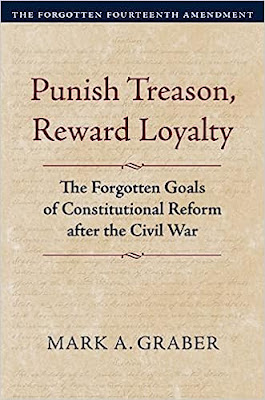
Mark A. Graber, Punish Treason, Reward Loyalty: The Forgotten Goals of Constitutional Reform after the Civil War (University of Kansas Press, 2023)
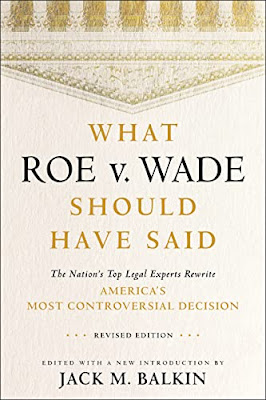
Jack M. Balkin, What Roe v. Wade Should Have Said: The Nation's Top Legal Experts Rewrite America's Most Controversial Decision - Revised Edition (NYU Press, 2023)

Andrew Koppelman, Burning Down the House: How Libertarian Philosophy Was Corrupted by Delusion and Greed (St. Martin’s Press, 2022)

Gerard N. Magliocca, Washington's Heir: The Life of Justice Bushrod Washington (Oxford University Press, 2022)
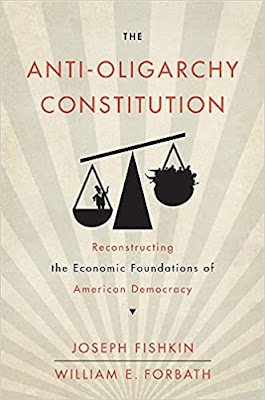
Joseph Fishkin and William E. Forbath, The Anti-Oligarchy Constitution: Reconstructing the Economic Foundations of American Democracy (Harvard University Press, 2022)
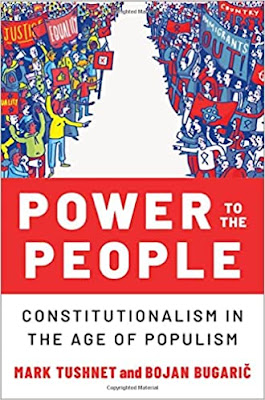
Mark Tushnet and Bojan Bugaric, Power to the People: Constitutionalism in the Age of Populism (Oxford University Press 2021).

Mark Philip Bradley and Mary L. Dudziak, eds., Making the Forever War: Marilyn B. Young on the Culture and Politics of American Militarism Culture and Politics in the Cold War and Beyond (University of Massachusetts Press, 2021).

Jack M. Balkin, What Obergefell v. Hodges Should Have Said: The Nation's Top Legal Experts Rewrite America's Same-Sex Marriage Decision (Yale University Press, 2020)

Frank Pasquale, New Laws of Robotics: Defending Human Expertise in the Age of AI (Belknap Press, 2020)

Jack M. Balkin, The Cycles of Constitutional Time (Oxford University Press, 2020)

Mark Tushnet, Taking Back the Constitution: Activist Judges and the Next Age of American Law (Yale University Press 2020).

Andrew Koppelman, Gay Rights vs. Religious Liberty?: The Unnecessary Conflict (Oxford University Press, 2020)

Ezekiel J Emanuel and Abbe R. Gluck, The Trillion Dollar Revolution: How the Affordable Care Act Transformed Politics, Law, and Health Care in America (PublicAffairs, 2020)

Linda C. McClain, Who's the Bigot?: Learning from Conflicts over Marriage and Civil Rights Law (Oxford University Press, 2020)
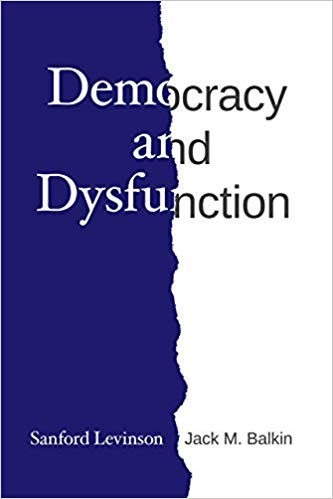
Sanford Levinson and Jack M. Balkin, Democracy and Dysfunction (University of Chicago Press, 2019)

Sanford Levinson, Written in Stone: Public Monuments in Changing Societies (Duke University Press 2018)

Mark A. Graber, Sanford Levinson, and Mark Tushnet, eds., Constitutional Democracy in Crisis? (Oxford University Press 2018)

Gerard Magliocca, The Heart of the Constitution: How the Bill of Rights became the Bill of Rights (Oxford University Press, 2018)

Cynthia Levinson and Sanford Levinson, Fault Lines in the Constitution: The Framers, Their Fights, and the Flaws that Affect Us Today (Peachtree Publishers, 2017)

Brian Z. Tamanaha, A Realistic Theory of Law (Cambridge University Press 2017)

Sanford Levinson, Nullification and Secession in Modern Constitutional Thought (University Press of Kansas 2016)

Sanford Levinson, An Argument Open to All: Reading The Federalist in the 21st Century (Yale University Press 2015)

Stephen M. Griffin, Broken Trust: Dysfunctional Government and Constitutional Reform (University Press of Kansas, 2015)

Frank Pasquale, The Black Box Society: The Secret Algorithms That Control Money and Information (Harvard University Press, 2015)

Bruce Ackerman, We the People, Volume 3: The Civil Rights Revolution (Harvard University Press, 2014)
Balkinization Symposium on We the People, Volume 3: The Civil Rights Revolution

Joseph Fishkin, Bottlenecks: A New Theory of Equal Opportunity (Oxford University Press, 2014)

Mark A. Graber, A New Introduction to American Constitutionalism (Oxford University Press, 2013)

John Mikhail, Elements of Moral Cognition: Rawls' Linguistic Analogy and the Cognitive Science of Moral and Legal Judgment (Cambridge University Press, 2013)

Gerard N. Magliocca, American Founding Son: John Bingham and the Invention of the Fourteenth Amendment (New York University Press, 2013)

Stephen M. Griffin, Long Wars and the Constitution (Harvard University Press, 2013)

Andrew Koppelman, The Tough Luck Constitution and the Assault on Health Care Reform (Oxford University Press, 2013)

James E. Fleming and Linda C. McClain, Ordered Liberty: Rights, Responsibilities, and Virtues (Harvard University Press, 2013)
Balkinization Symposium on Ordered Liberty: Rights, Responsibilities, and Virtues

Andrew Koppelman, Defending American Religious Neutrality (Harvard University Press, 2013)

Brian Z. Tamanaha, Failing Law Schools (University of Chicago Press, 2012)

Sanford Levinson, Framed: America's 51 Constitutions and the Crisis of Governance (Oxford University Press, 2012)

Linda C. McClain and Joanna L. Grossman, Gender Equality: Dimensions of Women's Equal Citizenship (Cambridge University Press, 2012)

Mary Dudziak, War Time: An Idea, Its History, Its Consequences (Oxford University Press, 2012)

Jack M. Balkin, Living Originalism (Harvard University Press, 2011)

Jason Mazzone, Copyfraud and Other Abuses of Intellectual Property Law (Stanford University Press, 2011)

Richard W. Garnett and Andrew Koppelman, First Amendment Stories, (Foundation Press 2011)

Jack M. Balkin, Constitutional Redemption: Political Faith in an Unjust World (Harvard University Press, 2011)

Gerard Magliocca, The Tragedy of William Jennings Bryan: Constitutional Law and the Politics of Backlash (Yale University Press, 2011)

Bernard Harcourt, The Illusion of Free Markets: Punishment and the Myth of Natural Order (Harvard University Press, 2010)

Bruce Ackerman, The Decline and Fall of the American Republic (Harvard University Press, 2010)
Balkinization Symposium on The Decline and Fall of the American Republic

Ian Ayres. Carrots and Sticks: Unlock the Power of Incentives to Get Things Done (Bantam Books, 2010)

Mark Tushnet, Why the Constitution Matters (Yale University Press 2010)
Ian Ayres and Barry Nalebuff: Lifecycle Investing: A New, Safe, and Audacious Way to Improve the Performance of Your Retirement Portfolio (Basic Books, 2010)
.jpg)
Jack M. Balkin, The Laws of Change: I Ching and the Philosophy of Life (2d Edition, Sybil Creek Press 2009)

Brian Z. Tamanaha, Beyond the Formalist-Realist Divide: The Role of Politics in Judging (Princeton University Press 2009)
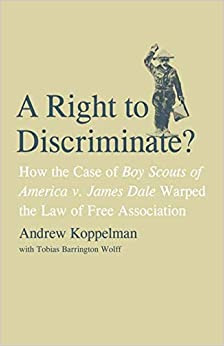
Andrew Koppelman and Tobias Barrington Wolff, A Right to Discriminate?: How the Case of Boy Scouts of America v. James Dale Warped the Law of Free Association (Yale University Press 2009)

Jack M. Balkin and Reva B. Siegel, The Constitution in 2020 (Oxford University Press 2009)
Heather K. Gerken, The Democracy Index: Why Our Election System Is Failing and How to Fix It (Princeton University Press 2009)

Mary Dudziak, Exporting American Dreams: Thurgood Marshall's African Journey (Oxford University Press 2008)

David Luban, Legal Ethics and Human Dignity (Cambridge Univ. Press 2007)

Ian Ayres, Super Crunchers: Why Thinking-By-Numbers is the New Way to be Smart (Bantam 2007)

Jack M. Balkin, James Grimmelmann, Eddan Katz, Nimrod Kozlovski, Shlomit Wagman and Tal Zarsky, eds., Cybercrime: Digital Cops in a Networked Environment (N.Y.U. Press 2007)

Jack M. Balkin and Beth Simone Noveck, The State of Play: Law, Games, and Virtual Worlds (N.Y.U. Press 2006)

Andrew Koppelman, Same Sex, Different States: When Same-Sex Marriages Cross State Lines (Yale University Press 2006)
Brian Tamanaha, Law as a Means to an End (Cambridge University Press 2006)
Sanford Levinson, Our Undemocratic Constitution (Oxford University Press 2006)
Mark Graber, Dred Scott and the Problem of Constitutional Evil (Cambridge University Press 2006)
Jack M. Balkin, ed., What Roe v. Wade Should Have Said (N.Y.U. Press 2005)
Sanford Levinson, ed., Torture: A Collection (Oxford University Press 2004)
Balkin.com homepage
Bibliography
Conlaw.net
Cultural Software
Writings
Opeds
The Information Society Project
BrownvBoard.com
Useful Links
Syllabi and Exams